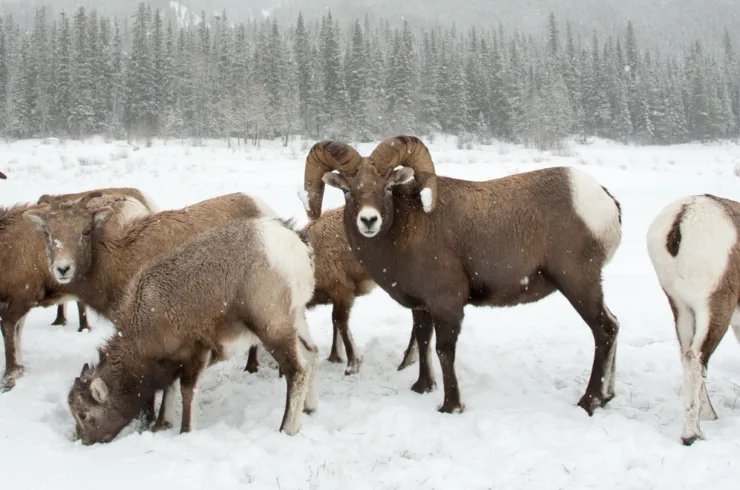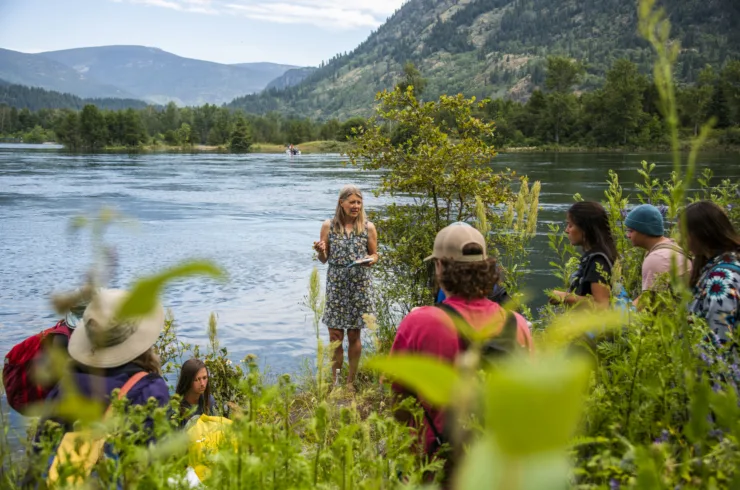Two weeks ago, I had an incredible field trip into the upper Seymour River Valley, north of Salmon Arm, where almost 600 hectares (or 800 soccer fields) of core caribou habitat and Inland Temperate Rainforest are under threat.
I wrapped my arms around old and ancient cedars, wandered wildlife trails that weaved through devil’s club taller than me, saw soft clumps of fresh caribou scat — and marvelled that all this and more will be destroyed if proposed clearcuts and logging roads are allowed to go ahead.
Currently, Pacific Woodtech is proposing 293 hectares of logging in the Seymour River watershed, while Stella Jones is proposing 315 hectares of cut blocks. Almost all the proposed new cut blocks overlap with the Columbia North caribou herd’s core habitat, and several include old growth forests — examples of the last intact remnants of our threatened Inland Temperate Rainforest — which were missed in the B.C. government’s old growth deferral process.
As remote and wild as these forests are, not everyone will have the chance to walk through them. But hopefully the below images by photographer Bailey Repp help you to envision what’s at stake.


The Seymour River’s floodplain meanders from its headwaters at Seymour Pass downriver to biologically rich oxbows which form extensive wetlands of shallow ponds, marshes, wet meadows, fens and shrub habitats. The Upper Seymour River Park protects the floodplain and the uppermost portion of the River. But outside of the park boundary, old growth and caribou are threatened. Currently proposed clearcuts also threaten habitat in the river’s tributaries, such as Ratchford Creek, pictured above right.

Devils club and ferns make up the rich understory in these forests, which can make bushwhacking slow and tedious. The below forest is part of Stella Jones’ proposed cut block 18991 in Mosquito Creek, the southernmost portion of the proposed logging plan.


Age brings character to forests. Old growth forests like these are about complexity. It’s about fallen limbs, snags rotting in place, trees leaning at weird angles, and gaps in the canopy that allow plants and vegetation to thrive.


(Left) As we wandered through a proposed cut block in the Upper Seymour, we noticed a prominent wildlife trail, and, after following it for a few hundred meters, we found caribou poop. The trail links heavily utilised core caribou habitat and provides an intact high- to low-elevation corridor through which caribou can move without needing to travel through roads or cut blocks. If currently proposed cut blocks go ahead, this linkage will be severed.

More than four decades of industrial logging in this landscape has fragmented much of the Columbia North caribou herd’s core habitat. Almost 40 percent is now disturbed by roads and cut blocks such as these.

The West side of the upper Seymour River. At bottom left are two proposed cut blocks: 17290 and 17300. This area will require new roadbuilding and is presently intact.


Large canopy gaps and old growth structure in Pacific Woodtech-proposed block 17289. This proposed block will require more than 1 kilometre of new road to be punched through a unique ancient forest stand which largely consists of old, large trees (including the giant pictured above, with lichenologist Toby Spribille), minimal understory and very few young trees.


Spraypaint marks an old-growth cedar tree in Pacific Woodtech block 17291. The tree will be measured to estimate logging volumes in parts of the rare inland temperate rainforest slated for logging. Below, I’m measuring a 2.31 metre diameter cedar in the same block.

It’s not just caribou that stand to suffer from the loss of these forests. Old growth forests like this are essential for clean air and a liveable climate, for wildfire mitigation, and for the preservation of species that make this world a richer place for all to live in — from rare oceanic lichens, to wolverines, grizzly bears and migratory birds like the Vaux’s swift.
Please, join our campaign today and ask B.C. Premier David Eby, Pacific Woodtech, Stella Jones and other key decision makers to issue a moratorium on logging in core caribou habitat. It only take 2 minutes using our online letter writing tool.










